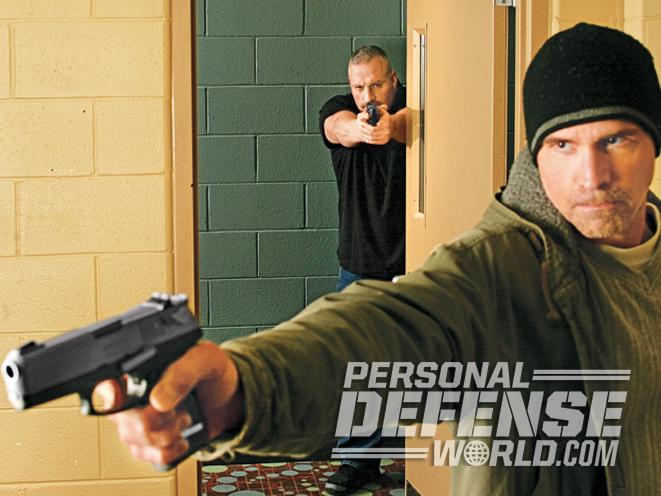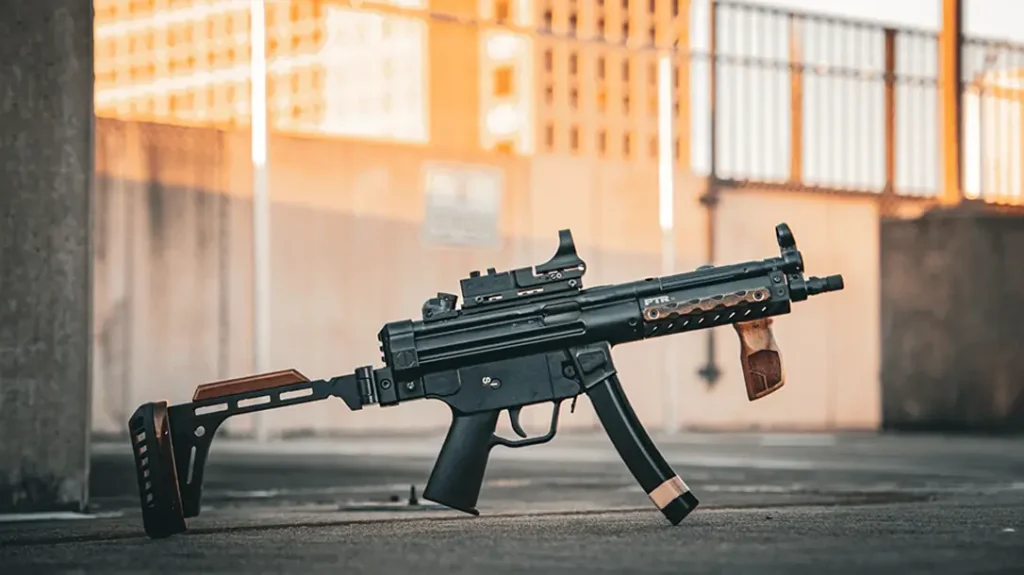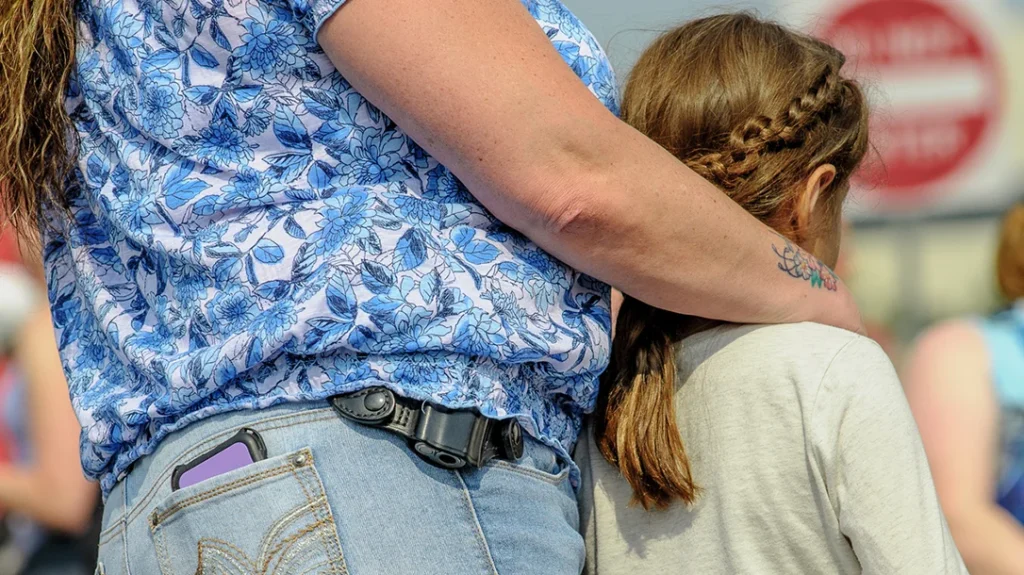“An active shooting can happen anywhere, anytime. Are you prepared for it?” asked instructor Steve Gilcreast on day one of the Sig Sauer Academy’s Active Shooter Response Instructor (ASRI) course. Taking this course a few days after the Washington Navy Yard shooting and while the siege at the Westgate Mall in Kenya was unfolding added to the urgency and relevance in training first responders how to handle active shooter scenarios.
ASRI is a three-day course and is taught at Sig Sauer’s 136-acre Epping, New Hampshire, facility. The ASRI is not a SWAT operator’s course. Teaching breaching, fancy hand signals for movement, code words used by operators to communicate or the finer points of room clearing are irrelevant because first responders to active shootings are typically patrol or school resource officers who do not train as a team and may not even know each other when assembling an ad hoc combat element on scene to take down an active shooter.
ASRI teaches an approach to dealing with active shooters that conforms to accepted practices used by U.S. law enforcement, which may differ from other nations whose laws, cultural norms and tactical doctrines vary, sometimes substantially.
Advertisement — Continue Reading Below
Engage & Respond
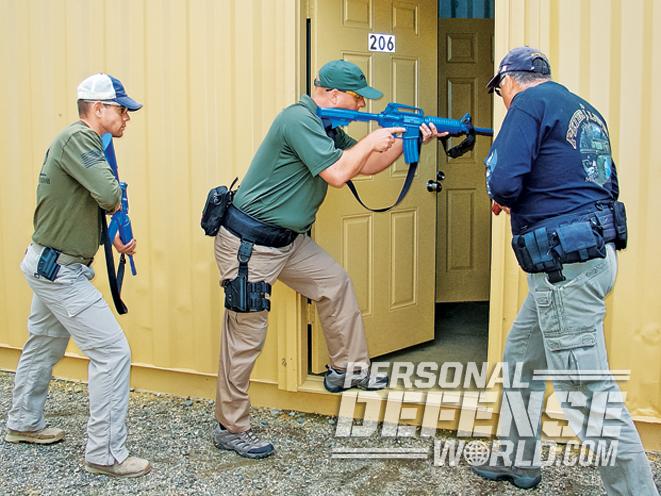
Active shooters attack soft targets where people congregate and where many casualties can be inflicted with little or no resistance. There are three phases to an active shooter response: Respond to the gunfire, hostage rescue, and search and rescue. Throughout each stage, the tactics of the contact team must be characterized by speed, surprise and decisive action.
RELATED STORY: Sig Sauer Self-Defense
Advertisement — Continue Reading Below
In phase one, first responders must aggressively move toward the sound of gunfire and attempt to engage the shooter(s). As ASRI points out, time is critical to saving lives for two reasons. First, active-shooter incidents usually last only six to 10 minutes yet reap a dramatic number of casualties. Second, most active shooters commit suicide or surrender when challenged by an armed response. In the Aurora cinema shooting, police were on the scene in 90 seconds after the first 911 call but were still too late to prevent 12 fatalities and 70 wounded. The suspect was arrested outside the theatre just six minutes after the call. In the Virginia Tech massacre, the shooter murdered two in a dormitory, and then started a shooting spree in a classroom building that lasted only 11 minutes but killed an additional 30 people. At Columbine, nearly all of the 13 fatalities and 21 people injured were shot in the 17 minutes after the first 911 call. (The first SWAT team entered the building 43 minutes after the first call.)
Engaging the suspects quickly can keep active shooters away from executing more innocents. This was the exact case in the Trolley Square mall shooting in Utah, where an off-duty patrolman armed only with a 1911 and no extra magazines stopped a rampage by trading gunfire with a shooter armed with shotgun before additional officers arrived. The obvious lessons of these massacres is that seconds count, and the sooner an armed response is made, from police or armed and trained civilians, the fewer the casualties.
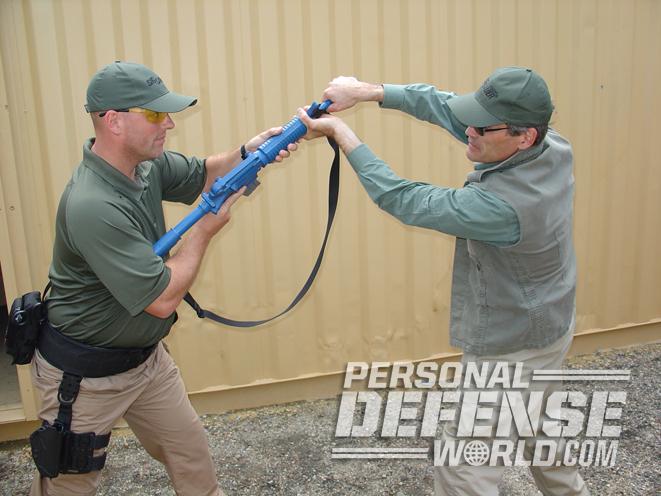
Advertisement — Continue Reading Below
In phase two, the suspects are being engaged and contained, or have been neutralized. Here the focus is on hostage rescue. Persons in danger are moved outside the immediate fire zone, and a collection center for the injured or imperiled can be established and secured until safe passage outside the building and the necessary personnel to lead the evacuation have been identified.
In phase three, search and rescue is conducted methodically while looking for possible additional shooters and innocents who are injured or hiding.
The phase of the incident dictates the actions of the responders. In the first stage, all focus is on stopping the shooters. This means that the response team can’t hesitate to check rooms on the way towards the gunfire except for a quick glance from the hallway. (If followed, lockdown procedures in schools will minimize open doors.) Yes, this approach puts the responders at risk of a second gunmen waiting in ambush. However, the ASRI reminds participants that an officer’s sworn duty is to protect the public and that the lives of hostages/victims and innocent bystanders are of higher priority.
Advertisement — Continue Reading Below
Besides hallway- and room-clearing maneuvers, active-shooter responders also need to know how to handle victims, pass quickly through panicked crowds who may rush them and delay their progress to getting to the shooter, and deal with explosives encountered along the way. ASRI addresses some of the tactics responders need to employ to address these inevitable problems and incorporates such obstacles in the simunitions scenarios.
Threat Analysis
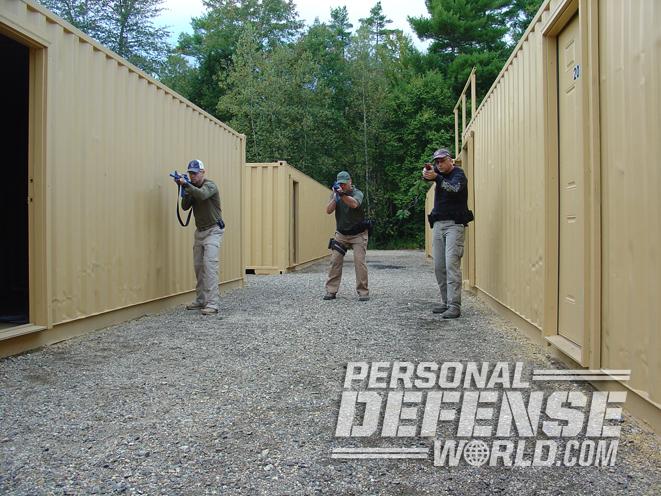
Advertisement — Continue Reading Below
During the first two days of the ASRI, participants are given an overview of recommended equipment for active-shooter responders, including considerations for using shotguns, pistol-caliber carbines and 5.56mm rifles for active-shooter engagements. The class is also instructed through various range drills with patrol rifles and pistols, as well as team movement inside buildings. Of particular relevance were two exercises using simunitions involving target identification/discrimination and a simulated active-shooter response where students played various roles. Everyone found that the lessons learned from the target-ID scenario were among the most valuable of the course. (I won’t describe this scenario because the intended effect will be lost on those who may take the course.) The simulated active-shooter scenarios involved force-on-force training, capturing what is taught on team operations and tactical maneuvers on a range that recreates several types of hallways, entryways and rooms found within a school or office building.
On day three, participants use what they have learned and teach the course to patrol officers and SROs from local departments under the watchful eyes of Sig Sauer instructors, who evaluate and constructively critique their performance afterwards.
The ASRI is not a marksmanship course and the live-fire portion was about two hours. However, several drills were very effective teaching tools for training active-shooter responders. One was designed to show the relative effectiveness of rifle fire with a red-dot-equipped AR-15 compared to a pistol, while another demonstrated differences in accuracy and speed when firing on the move compared to using the “move-stop-shoot-move” technique. Scores and times were compared for each variation. Gilcreast appropriately noted that these exercises were shot under ideal conditions and that students should be reminded to expect lots of complications in real life, such as bystanders in the foreground and background.
Advertisement — Continue Reading Below
Though the ASRI course is not intended to be a SWAT operator course, it does cover some basics such as movement towards a threat using two-, three- and four-man teams and search and rescue. Tactical maneuvers within a single-story building were also taught, including entering corner-fed and center-fed rooms, stacking up and entering doorways, and movement around corners and through hallway intersections.
Mission-Specific Training
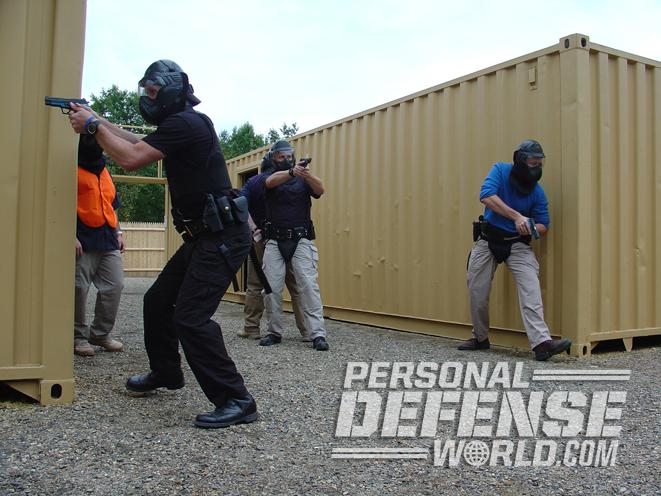
Advertisement — Continue Reading Below
Gilcreast left us with several thoughts on Sig Sauer’s teaching philosophy that are applicable to all tactical firearms training. First, understand the mission in real life and design the range training exercises to fit it, not vice-versa. That may require adjusting the range rules and training exercises to simulate real-life firearm deployments. For instance, ready/firing positions and safe handling techniques that are needed in real life also need to be taught on the square range. One example is keeping your muzzle at least 1 meter ahead of your partner’s muzzle. That would not fly on most ranges where the 180-degree rule is often the standard but won’t work or be used on the street. Targets should be realistic looking, and live fire and simunition drills should be practical, requiring movement, team operations and decision making (e.g. shoot/don’t shoot). Explain to your students the connection between the range exercises and the real-world scenario they are training for. Also explain the rationale behind a technique you teach. It will help learning. Finally, have objective-based lessons and training. Don’t just train to meet some qualification standard.
RELATED STORY: 10 Cases Where An Armed Citizen Took Down An Active Shooter
The Sig Sauer Academy’s ASRI provides relevant information to instructors who will teach active-shooter response to the law enforcement officers most likely to be in a position to stop mass murder: the first responders. The Academy’s facility has the infrastructure necessary to teach the techniques in a realistic manner, and the lead instructor offers both substance gained from personal experience in the military and law enforcement and the temperament of a professional trainer.
Advertisement — Continue Reading Below
For more information, visit http://www.sigsaueracademy.com or call 603-610-3400.
